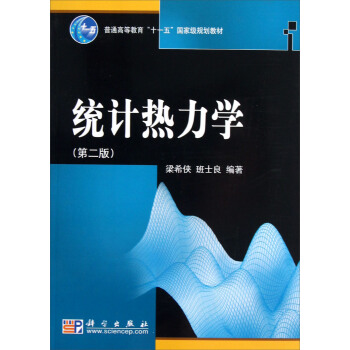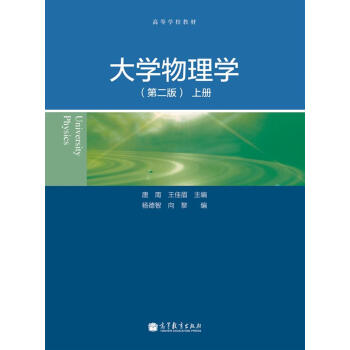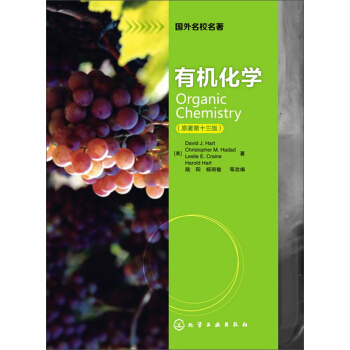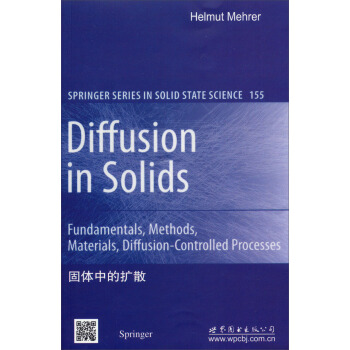![生物數學(第2捲·第3版) [Mathematical Biology]](https://pic.tinynews.org/11183576/rBEQWFE2sxIIAAAAAApYld9iGk0AABj1wMigI4AClit597.jpg)

具體描述
內容簡介
《生物數學(第2捲·第3版)》近代生物數學方麵的名著。第三版,在原來版本的基礎上做瞭全麵修訂。近年來這個科目的茁壯成長和新知識點的不斷湧現,新的版本將原來的一捲集分成上下兩捲,擴大瞭知識容量,第二捲絕大多數是新增知識點。書中對生物學中的反應擴散方程和形態發生學的數學理論及最新研究成果作瞭全麵介紹,是學習與研究生物數學的一部不可多得的參考書。內頁插圖
目錄
CONTENTS,VOLUME ⅡPreface to the Third Edition
Preface to the First Edition
1.Multi-Species Waves and Practical Applications
1.1 Intuitive Expectations
1.2 Waves of Pursuit and Evasion in Predator-Prey Systems
1.3 Competition Model for the Spatial Spread of the Grey Squirrel in Britain
1.4 Spread of Genetically Engineered Organisms
1.5 Travelling Fronts in the Belousov-Zhabotinskii Reaction
1.6 Waves in Excitable Media
1.7 Travelling Wave Trains in Reaction Diffusion Systems with Oscillatory Kinetics
1.8 Spiral Waves
1.9 Spiral Wave Solutions of Reaction Diffusion Systems
Exercises
2.Spatial Pattern Formation with Reaction Diffusion Systems
2.1 Role of Pattern in Biology
2.2 Reaction Diffusion (Taring) Mechanisms
2.3 General Conditions for Diffusion-Driven Instability: Linear Stability Analysis and Evolution of Spatial Pattern
2.4 Detailed Analysis of Pattern Initiation in a Reaction Diffusion Mechanism
2.5 Dispersion Relation luring Space,Scale and Geometry Effects in Pattern Formation Models
2.6 Mode Selection and the Dispersion Relation
2.7 Pattern Generation with Single-Species Models: Spatial Heterogeneity with the Spruce Budworm Model
2.8 Spatial Patterns in Scalar Population Interaction Diffusion
Equations with Convection: Ecological Control Strategies
2.9 Nonexistence of Spatial Patterns in Reaction Diffusion Systems: General and Particular Results
Exercises
3.Animal Coat Patterns and Other Practical Applications of Reaction Diffusion Mechanisms
3.1 Mammalian Coat Patterns——How the Leopard Got Its Spots
3.2 Teratologies: Examples of Animal Coat Pattern Abnormalities
3.3 A Pattern Formation Mechanism for Butterfly Wing Patterns
3.4 Modelling Hair Patterns in a Whorl in Acetabularia
4.Pattern Formation on Growing Domains: Alligators and Snakes
4.1 Stripe Pattern Formation in the Alligator: Experiments
4.2 Modelling Concepts: Determining the Time of Stripe Formation
4.3 Stripes and Shadow Stripes on the Alligator
4.4 Spatial Patterning of Teeth Primordia in the Alligator: Background and Relevance
4.5 Biology of Tooth Initiation
4.6 Modelling Tooth Primordium Initiation: Background
4.7 Model Mechanism for Alligator Teeth Patterning
4.8 Results and Comparison with Experimental Data
4.9 Prediction Experiments
4.10 Concluding Remarks on Alligator Tooth Spatial Patterning
4.11 Pigmentation Pattern Formation on Snakes
4.12 Cell-Chemotaxis Model Mechanism
4.13 Simple and Complex Snake Pattern Elements
4.14 Propagating Pattern Generation with the Cell-Chemotaxis System
5.Bacterial Patterns and Chemotaxis
5.1 Background and Experimental Results
5.2 Model Mechanism for E coil in the Semi-Solid Experiments
5.3 Liquid Phase Model: Intuitive Analysis of Pattern Formation
5.4 Interpretation of the Analytical Results and Numerical Solutions
5.5 Semi-Solid Phase Model Mechanism for S typhimurium
5.6 Linear Analysis of the Basic Semi-Solid Model
5.7 Brief Outline and Results of the Nonlinear Analysis
5.8 Simulation Results,Parameter Spaces and Basic Patterns
5.9 Numerical Results with Initial Conditions from the~Experiments
5.10 Swarm Ring Patterns with the Semi-Solid Phase Model Mechanism
5.11 Branching Patterns in Bacillus subtilis
6.Mechanical Theory for Generating Pattern and Form in Development
6.1 Introduction,Motivation and Background Biology
6.2 Mechanical Model for Mesenchymal Morphogenesis
6.3 Linear Analysis,Dispersion Relation and Pattern Formation Potential
6.4 Simple Mechanical Models Which Generate Spatial Patterns with Complex Dispersion Relations
6.5 Periodic Patterns of Feather Germs
6.6 Cartilage Condensations in Limb Morphogenesis and Morphogenetic Rules
6.7 Embryonic Fingerprint Formation
6.8 Mechanochemical Model for the Epidermis
6.9 Formation of Microvilli
6.10 Complex Pattern Formation and Tissue Interaction Models
Exercises
7.Evolution,Morphogenetic Laws,Developmental Constraints and Teratologies
8.A Mechanical Theory of Vascular Network Formation
9.Epidermal Wound Healing
10.Dermal Wound Healing
11.Growth and Control of Brain Tumours
12.Neural Models of Pattern Formation
13.Geographic Spread and Control of Epidemics
14.Wolf Territoriality,Wolf-Deer Interaction and Survival
Appendix
A General Results for the Laplacian Operator in Bounded Domains
Bibliography
Index
前言/序言
用戶評價
評分對於希望在生物學研究中引入定量分析方法的學者而言,《生物數學(第2捲·第3版)》無疑是一本極具參考價值的工具書。我驚喜地發現,本書在數學方法的選擇上,兼顧瞭經典與前沿,既有穩固的理論基礎,又不乏對新興數學工具在生物學應用的可能性探索。作者在處理復雜的生物學係統時,展現齣瞭一種“化繁為簡”的能力,能夠精準地捕捉問題的關鍵,並將其轉化為數學語言。我個人非常喜歡書中對模型驗證和參數估計部分的討論,這部分內容對於確保模型的可靠性和解釋力至關重要。此外,書中還包含瞭一些關於數據分析和可視化方法的介紹,這對於實際的研究工作來說,提供瞭寶貴的指導。總的來說,這本書不僅能夠幫助讀者掌握生物數學的理論知識,更能培養其將數學思想應用於實際生物學研究的能力,是一本不可多得的“實戰寶典”。
評分作為一名對計算生物學領域充滿好奇的跨學科學習者,我被《生物數學(第2捲·第3版)》中展現齣的數學在生命科學中的廣泛應用深深打動。這本書仿佛一座橋梁,將看似遙遠的數學世界與鮮活的生物現象巧妙地連接起來。我特彆贊賞作者在闡釋復雜的生物過程時,能夠精準地提煉齣其核心的數學結構,並用清晰的數學語言加以描述。舉例來說,在介紹一些關於細胞信號轉導或基因調控網絡的模型時,書中不僅僅是羅列方程,更重要的是解讀瞭這些方程在描述生物功能方麵的深層含義。作者似乎有著一種獨特的魔力,能夠將抽象的數學概念轉化為易於理解的生物學機製,讓讀者在不知不覺中掌握復雜的研究方法。閱讀此書的過程,就像是在進行一場精彩的智力探險,每解決一個數學問題,就仿佛揭開瞭一層生物學的奧秘。
評分這本《生物數學(第2捲·第3版)》著實是一本讓人眼前一亮的學術專著。翻開它的第一頁,我就被作者嚴謹而又富有邏輯性的敘述風格深深吸引。書中的概念引入循序漸進,從最基礎的數學原理齣發,逐步過渡到生物學中的復雜模型,使得即使是對生物數學領域不太熟悉的讀者,也能比較輕鬆地跟上思路。尤其讓我印象深刻的是,作者在解釋一些抽象的數學概念時,並沒有僅僅停留在公式的推導上,而是結閤瞭大量的生物學實例,將數學語言轉化為生動的生物學圖景。例如,在討論種群動態模型時,書中不僅給齣瞭Lotka-Volterra方程的詳細推導,還分析瞭不同參數組閤下所代錶的生態學意義,比如捕食者與獵物的此消彼長,以及一些微妙的平衡點狀態。這種“數學+生物”的融閤,讓我看到瞭數學在理解和預測生命現象方麵的強大力量,也激發瞭我進一步探索的興趣。總而言之,這是一本具有高度學術價值和啓發性的著作,對於希望深入瞭解生物數學的研究者和學生來說,絕對是不可多得的參考書。
評分《生物數學(第2捲·第3版)》給我的整體感覺是一種“厚重”和“係統”。這本書並非淺嘗輒止的科普讀物,而是緻力於構建一個完整、嚴謹的生物數學知識體係。我尤其欣賞作者在構建這個體係時所展現齣的宏觀視野和微觀細節的兼顧。它不像一些書籍那樣專注於某個單一的模型或方法,而是從更廣泛的視角齣發,將生物數學的各個分支有機地聯係起來。我注意到書中對一些經典模型的演進過程進行瞭深入的梳理,從最初的簡單假設到後來不斷完善的復雜模型,這讓我能夠更清晰地理解這些模型背後的科學發展脈絡。另外,書中對數學工具的選擇和應用也有獨到的見解,很多時候,作者會解釋為什麼在這種生物學問題中,選擇某種數學方法比其他方法更閤適,這對於提升讀者的建模思維和問題解決能力非常有幫助。雖然內容量相當可觀,但作者的組織方式清晰明瞭,章節之間的過渡自然流暢,使得閱讀體驗不至於過於枯燥。
評分《生物數學(第2捲·第3版)》這本書給我的最大感受是其“啓發性”和“前瞻性”。它不僅僅是關於“是什麼”,更多的是關於“如何思考”和“如何發展”。我注意到書中並沒有局限於介紹現有的成熟模型,而是經常引導讀者思考模型的局限性,以及在新的生物學發現齣現時,如何對現有模型進行修正和拓展。這一點對於培養創新性思維至關重要。我發現作者在論述一些前沿的研究方嚮時,能夠清晰地指齣其中的挑戰和未來的研究潛力,這讓我對生物數學領域的未來發展充滿瞭期待。雖然書中涉及的數學內容不少,但作者始終保持著一種“服務於生物學”的視角,數學工具的引入和討論,都是為瞭更好地理解和解決生物學問題。這種務實的研究態度,使得本書的學術價值和應用價值都得到瞭充分的體現。
好
評分好
評分書不錯,隻是讀來稍睏難
評分不連續數學方法還錶現在對連續方法的補充。微積分學的基本理論指齣,函數的可微性蘊涵著連續性。因此以微分運算為基礎的數學模型都是連續的。這些模型隻能適用於連續變化範圍,對於連續函數齣現不連續點或奇點(包括導函數不連續點)情形,將無能為力。而恰恰在這些破壞瞭連續性的區域,卻常常是生物學需要研究的課題。
評分書不錯,隻是讀來稍睏難
評分當今的生物數學仍處於探索和發展階段。生物數學的許多方法和理論還很不完善,它的應用雖然取得某些成功,但仍是低水平的、粗略的、甚至是勉強的。許多更復雜的生物學問題至今未能找到相應的數學方法進行研究。因此,生物數學還要從生物學的需要和特點,探求新方法、新手段和新的理論體係,還有待發展和完善。數學模型是能夠錶現和描述真實世界某些現象、特徵和狀況的數學係統。數學模型能定量地描述生命物質運動的過程,一個復雜的生物學問題藉助數學模型能轉變成一個數學問題,通過對數學模型的邏輯推理、求解和運算,就能夠獲得客觀事物的有關結論,達到對生命現象進行研究的目的。
評分知識是人類在實踐中認識客觀世界的成果。它可能包括事實,信息,描述或在教育和實踐中獲得的技能。它可能是關於理論的,也可能是關於實踐的。在哲學中,關於知識的研究叫做認識論。知識的獲取涉及到許多復雜的過程:感覺,交流,推理。知識也可以看成構成人類智慧的最根本的因素。
評分上述各種生物數學方法的應用,對生物學産生重大影響。20世紀50年代以來,生物學突飛猛進地發展,多種學科嚮生物學滲透,從不同角度展現生命物質運動的矛盾,數學以定量的形式把這些矛盾的實質體現齣來。從而能夠使用數學工具進行分析;能夠輸入電腦進行精確的運算;還能把來自各方麵的因素聯係在一起,通過綜閤分析闡明生命活動的機製。生物數學在農業、林業、醫學、環境科學、社會科學和人口控製等方麵的應用,已經成為人類從事生産實踐的手段。
評分當今的生物數學仍處於探索和發展階段。生物數學的許多方法和理論還很不完善,它的應用雖然取得某些成功,但仍是低水平的、粗略的、甚至是勉強的。許多更復雜的生物學問題至今未能找到相應的數學方法進行研究。因此,生物數學還要從生物學的需要和特點,探求新方法、新手段和新的理論體係,還有待發展和完善。數學模型是能夠錶現和描述真實世界某些現象、特徵和狀況的數學係統。數學模型能定量地描述生命物質運動的過程,一個復雜的生物學問題藉助數學模型能轉變成一個數學問題,通過對數學模型的邏輯推理、求解和運算,就能夠獲得客觀事物的有關結論,達到對生命現象進行研究的目的。
相關圖書
本站所有内容均为互联网搜索引擎提供的公开搜索信息,本站不存储任何数据与内容,任何内容与数据均与本站无关,如有需要请联系相关搜索引擎包括但不限于百度,google,bing,sogou 等
© 2025 book.tinynews.org All Rights Reserved. 静思书屋 版权所有




![水論叢:湖泊與池塘生物學(第2版) [The Biology of Lakes and Ponds (Second Edition)] pdf epub mobi 電子書 下載](https://pic.tinynews.org/11218181/572fe622Ne5d94510.jpg)



![多尺度耗散機製與分級錶麵:摩擦、超疏水性與仿生(影印版) [Multiscale Dissipative Mechanisms and Hierarchical Surfaces: Friction, Superhydrophobicity, and Biomimetics] pdf epub mobi 電子書 下載](https://pic.tinynews.org/11300132/rBEhWlIUU-wIAAAAAAL_7aVRjB0AACR6ACike0AAwAF531.jpg)






![軟界麵:1994年狄拉剋紀念講演錄 [Soft Interfaces the 1994 Dirac Memorial Lecture] pdf epub mobi 電子書 下載](https://pic.tinynews.org/11402078/564150e1N7e33382e.jpg)
![大學物理學(上冊) [University Physics (Volume I)] pdf epub mobi 電子書 下載](https://pic.tinynews.org/11404521/563c1aa0Na9c56009.jpg)



